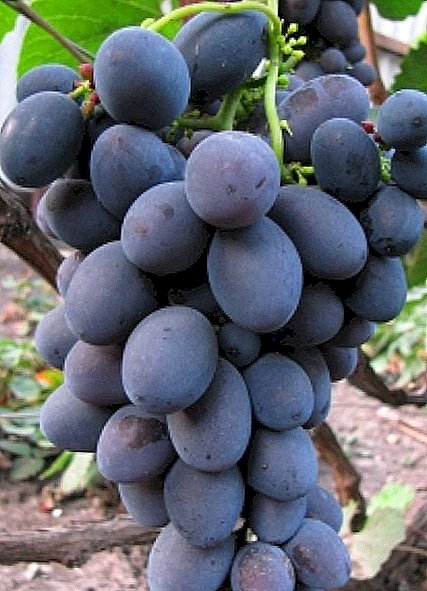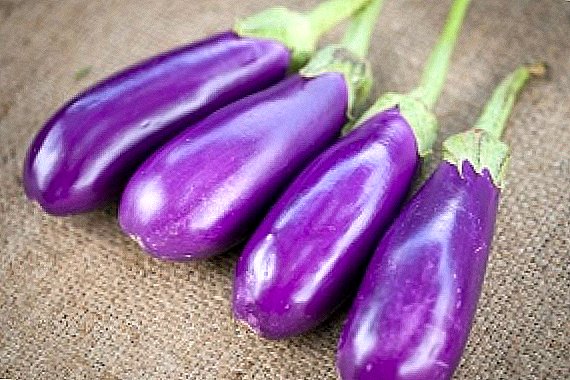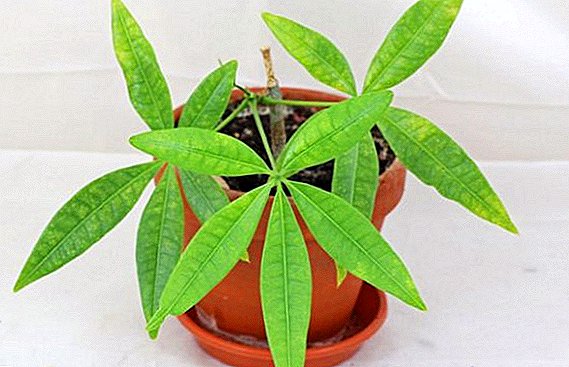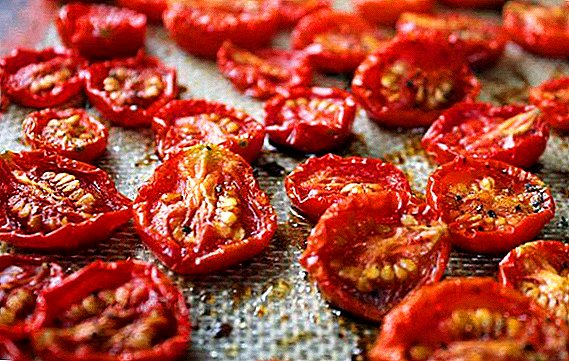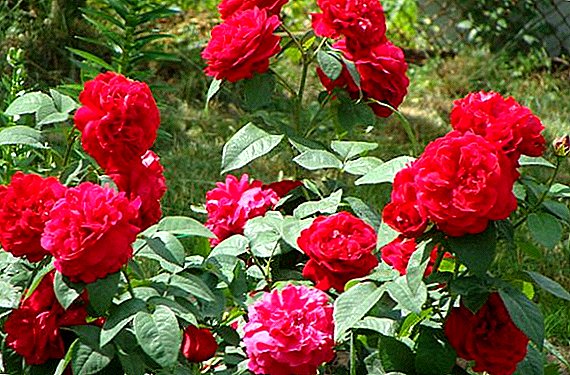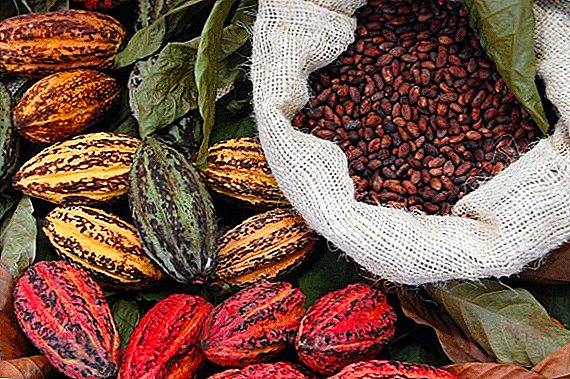 Sanguinaria is an exotic perennial plant, which, thanks to its delicate beauty and at the same time unpretentiousness, is beginning to gain more and more attention of flower growers and landscape designers.
Sanguinaria is an exotic perennial plant, which, thanks to its delicate beauty and at the same time unpretentiousness, is beginning to gain more and more attention of flower growers and landscape designers.
Description and properties
Sanguinaria is a miniature bush that blooms for a short time and occupies almost the main role among early flowering plants in creating interesting compositions for pristenennyh places.
In early spring crocuses, lilies of the valley, forest breeze, muscari, irises, galantus, hionodoksa, periwinkle, hyacinth, liverwort, kolhikum, crested insect, primula, lungwort, narcissus, hellebore, chamber, scilla will delight you with its flowering.

What it looks like, where it grows
Sanguinaria grows in North America, and more specifically in southern Canada and in the eastern part of the United States, which is why it is called Canadian. In nature, a flower prefers wet shady forests, ravines and areas close to river streams.
It should be noted that when the root is damaged, the juice immediately begins to stand out, and, according to eyewitnesses, the root juice is very similar to human blood, therefore the name "sanguinaria canadensis" in Latin means "bloody root".  Sanguinaria has these characteristics:
Sanguinaria has these characteristics:
- Perennial with a long horizontal fleshy rhizome, the diameter of which reaches 2 centimeters. The root consists of areas that branch out, thereby occupying the territory and forming dense thickets. Each internode lives no more than 4 years, then dies.
- Low shrub, peduncle height reaches no more than 15 centimeters.
- The plant blooms immediately after the snow has melted. The flowering period depends on weather conditions.
- Only one flower grows from a bud. Its shape can be simple (5 centimeters in diameter) and terry.
- It has one sheet, which is twisted around the peduncle. It is fully revealed after the flower wilts and rises to a height of 30 centimeters. The shape of the leaf is heart-shaped along the edge of a gear with a blue-gray tint.
- It is shade-tolerant, but grows in the sun. The flower is quite drought resistant.
- Seeds ripen at the end of summer. The seed box has the shape of a pod up to 10 centimeters long. The black seed itself has a fleshy orange growth that ants love. Insects and are natural sowers of this plant.

The perennial has one drawback - it dries out at the end of summerleaving behind empty plots of land. This should be taken into account when drawing up garden compositions.
Did you know? The plant was brought to the botanical gardens of Europe and primarily to England in the XYII century, where it is very popular to this day.
When and how to bloom
Flowering occurs in the spring immediately after the snow melts, and the duration of this process depends on the weather. If spring is cold - flowering period lasts up to a month. When air temperature is up to + 25 degrees, sanguinaria blooms for no more than 3 weeks. The height of the peduncle during flowering reaches 15 centimeters.
Flowers have white oval petals with mother of pearl in diameter up to 7 centimeters. They look like daisies, because they have a yellow heart, framed by eight petals. Flowers simple and terry forms, which is the result of natural mutations. The second ones look like a peony flower, but only in miniature. The most popular terry varieties:
- "Multiplex" - narrow rows are arranged in several rows.
- "Floro Pleno" - The petals are much wider than the "Multiplex", have a sharp edge and a rather lush flower.


What is useful
Canadian Sanguinaria is not only a garden decoration, but also perennial with healing properties:
- In homeopathy, it is used as an antibacterial, expectorant and spasm-removing agent.
- Contained in medicines used to treat joints, headaches and asthma.
- Restores hormonal balance and normalizes metabolic processes.
- Used in preparations for the treatment of female diseases. For example, the popular "Remens" contains sanguinaria extract.
- "Sanguinaria Canadensis" - tincture of fresh root of this plant, used in the treatment of diseases of the upper respiratory tract, whooping cough, rheumatism and other diseases.
Important! The plant cannot be used for medicinal purposes on its own, as sanguinaria contains toxic substances. Before using folk remedies consult a doctor.
Choosing a landing site
Canadian Sanguinaria is an unpretentious and versatile exotic that can adapt to different lighting conditions. She is grows well in the shade under the trees and in the sun, but subject to regular watering. From this we can conclude that when planting plants need to look only at decorative effects.

Since sanguinaria is an early-flowering plant, the ideal place for planting will not be a dug up area under deciduous trees among the same primroses.
Lighting
For good growth and decoration needed sunlight or partial penumbra. The plant is shade-tolerant, but with strong shading, for example, under honynikami, flowers do not reveal.
The soil
Sangvinaria grows on sour peaty, sandy soils with a neutral reaction. General conditions:
- the land is light and loose;
- good drainage, which completely eliminates stagnant water;
- on heavy soils sanguinaria does not grow at all.
Sanguinaria will look beautiful against the background of ground cover plants (thyme, primrose) or in combination with low perennials (geranium, boxwood). Harmoniously sanguinaria will look on the alpine hills.
Planting seedlings on the site
That the plant got accustomed and went to growth, it is necessary correctly carry out the landing process: if we plant delenka rhizomes, then they are laid out horizontally with the roots down into prepared furrows of a depth of 7 centimeters. Seedlings are planted in ready-made holes, trying not to damage the earthen cluster of seedlings. The distance between plantings is maintained up to 30 centimeters. The land is carefully compacted and watered abundantly

Use in garden compositions
Sanguinaria has the properties to spread out on the territory where it grows, so this should be taken into account when creating garden compositions. For decoration in the compositions used as:
- the underscore element of various trees and bushes;
- bright spots in shady parts of the plot;
- in garden plantings as an accent, as an early flowering plant;
- "highlight" between the stones on the rocky hills;
- mobile flower beds, growing specimens in vases and containers.
Did you know? The blooming sanguinar flowers exude a scent comparable to the smell of freshly printed bills.
How to care in the process of growing
When growing sanguinaria in partial shade or shade in the open field, it absolutely does not need special care, except for spring top dressing for flowering species. If it is planted on a sunny plot, it is necessary that the soil be wet.
Watering
Determining the regularity of irrigation, you must be guided by the condition of the soil. A moderately moist soil is ideal for this garden crop. Sanguinaria can tolerate short dry periods, because its fleshy roots have the ability to accumulate moisture.

Important! In the summer, when drought is more than 10 days without watering, the sanguinaria dies.
Top dressing
Since sanguinaria has horizontal roots located shallowly in the soil, therefore, any digging is excluded. The main feeding is carried out in early spring with a full range of mineral fertilizers.
They are introduced during soil mulching. For mulch taken light crumbly organic fertilizers: compost, humus or peat. You can also use the leaves of aspen, linden and other forest trees, which, respectively, must be composted.
Wintering
The plant is not afraid of severe frosts and snowless winters. According to the American classification, it is located in zone 3 for frost resistance and doesn't need shelter.

Disease and Pest Resistance
Sanguinarians practically do not suffer from diseases and are not affected by pests. The only problem arises when the soil is very wet, the roots may rot.
Breeding methods
Gardeners can propagate this exotic, unpretentious plant in two ways - by dividing the rhizomes, sowing seeds.
Division of rhizomes
The division of the roots is carried out at the end of summer or early autumn, when leaves fall on the exotus. Pieces of rhizomes should be small, but always with one kidney. The roots on the lower part of the main root must be preserved without pruning, since they do not grow back during the autumn.
Without them, the transplanted delenki are poorly fixed and can be on the surface of the earth in winter during frosts. If the plants are intended for sale, the digging and dividing procedure is carried out in the middle of summer. Plots are planted in pots and kept in the shade.

Growing from seed
Obtaining plants from seeds is a problem, since their germination is very low. If you have a great desire to try this method, you must Follow the following instructions:
- To stratify the seeds, keeping them for 3 months in a refrigerator at a temperature of +5 degrees.
- In the prepared loose soil sow the seeds and germinate under the film in a warm and bright place. Since the seedlings are very delicate and reacts poorly to picking, it is best to sow seeds in peat tablets.
- Small shoots must be evenly watered and kept warm.

Given the unpretentiousness of the sanguinarium, even a novice gardener will be able to easily grow it on the site, and good shade tolerance will allow you to create various garden compositions.


